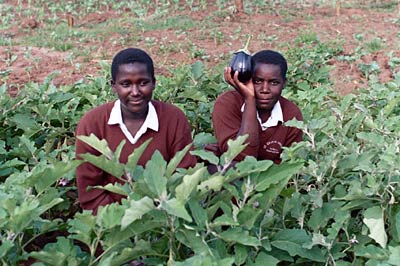Just type in Energy News into any Search Engine like Yahoo, MSN or Google and you turn up thousands of pages. 5 entries off the first page are listed below:
http://www.forbes.com/energy/2006/11/27/china-india-energy-biz-energy-cx_pm_1127energy_slide.html
China and India are Asia’s two largest emerging economies. Both have large populations, industrializing economies and rising living standards and energy consumption. This slide show compares energy production, consumption and efficiency of both countries head-to-head and the environmental issues both are confronting as a result of their growing energy use. The numbers are drawn form official statistics, the Organization of Economic Cooperation and Development and the International Energy Agency and are the latest available full-year estimates. The energy intensity comparison is based on purchasing power parity conversion rates.
Forbes of course pointing out that China and Indian will pretty much kill off our species.
http://www.green-energy-news.com/arch/nrgs2008/20080016.html

February 22, 2008 – Vol.12 No. 48
A SOLAR POWERED WORLD?
Arizona Public Service (APS) has announced plans to build a 280-megawatt concentrating solar power plant in the desert 70 miles southwest of Phoenix. The Solana Generating Station, if it were operating today, would be the single largest solar power plant on the planet. Solana, with its thermal energy storage, will be able to operate 24/7 providing power for 70,000 homes.
As big and impressive as it sounds it’s only a tiny fraction of what’s possible: According to the Trans-Mediterranean Renewable Energy Cooperation (TREC), the energy potential from sunlight striking the world’s deserts is 700 times that of the world’s primary energy demand today. Further, solar power generated in the world’s deserts could reach 90 percent of the world’s population. Australia, Asia, Africa, North and South America all have expansive deserts. By satellite measurement there are 13,500,000 square miles (35 million square kilometers) of hot, dry, sunlit desert on the planet.
Like the APS project, solar thermal power generation is the best option for the world’s deserts. Not only is it a time-tested technology that can provide low cost power, cooling water from the plants can be used for desalinization of sea water. (Energy from clean sources is a major global need right now. So is fresh water.)
Further, made of glass and steel there are no supply constraints to solar thermal power generation equipment as with purified silicon needed for photovoltaics.
The TREC concept, known as DESERTEC, is to build solar power plants in the Middle East and North Africa (MENA) and build power lines – a Euro-Supergrid – connecting the plants to Europe.
Let’s see that would be Africa getting ripped off by Europe AGAIN!
Alternative Energy News
News » Energy | Biofuels | Environment | Hydrogen | Solar | Transportation | Wind


The Most Efficient Washing Machines Of 2008
March 10th, 2008 · 1 Comment

At MetaEfficient, I evaluate appliances based on a number of factors, namely: energy efficiency, effectiveness, reliability, and price. This holds true for washing machines, because all of these factors need to be considered and weighed against each other (I’d also like to include lifecycle analysis, but there’s no information available for washers). For raw efficiency data, one can turn to the Energy Star ratings, to work out which machines use the least amount of energy and water overall. Based on the Energy Star data, the most efficient washing machines for 2008 are made by LG Electronics and Kenmore.
Three LG washers received the best Energy Star ratings, and four Kenmore washers followed very close behind the LG machines. These ratings are based on the Modified Energy Factor (MEF) which is a way to compare the relative efficiency of different units of clothes washers (higher is better). The second factor is the Water Factor which is the number of gallons per cycle per cubic foot that a washing machine uses (lower is better). Here is a listing of the highest rated washing machines according the February 2008 update:
This site has a real cool video on its home page, but I could not get it to load up on our Blog. The article is from a sidebar. Please look at the video though.
http://energy.sourceguides.com/news.shtml

| Environment: THE ENERGY CRUNCH AND THE PACIFIC ISLANDS |
|
Rising fuel costs mean lost growth for some
Asterio Takesy
Few places have been hard hit by the recent rise in energy costs as the Pacific islands countries (PICs). While the impacts are felt around the world, islands societies are already on a financial razor’s edge—rising fuel costs being more than many can bear.Making matters worse is that an estimated 90 percent of total electricity generation and the fuel for the entire sea, land and air transport in our region comes directly from fossil fuels. In many of our members, fossil fuels represent a full 100 percent across the board.It is estimated that for every $10 increase in the price of a barrel of crude oil, national incomes for the Federated States of Micronesia and Kiribati reduce by over 4% and by at least 2% in Tonga, Tuvalu, Palau and the Solomon Islands. Considering the price of oil has increased by approximately $45 a barrel since 2002, this translates into at least five years of lost growth for some islands countries.Consider also the impact on the balance of trade. It is estimated that fuel imports are now triple the value of merchandise exports in Kiribati, Samoa and Federated States of Micronesia. In the case of Fiji, its combined export earnings in 2006 from three of the country’s major industries, gold, sugar and textiles, only accounted for two-thirds of the country’s total fuel import bill.
|
All this points to the continuing need for the development of renewable energy resources throughout the Pacific region (and the world). PICs have the highest renewable energy potential per capita in the world.
We are in the midst of the largest ocean on earth with its unlimited wave, tidal and ocean thermal energy. The tropical wind is always blowing and we are along the Pacific “Rim of Fire” with its potential for geothermal power generation. So why hasn’t adoption of renewables happened more quickly?
Let’s see the Islands of the Pacific have not moved ahead with renewables and alternative generation BECAUSE they are in the stranglehold of the Energy Corporation. Man what a surprise
Again, the above is a side from:http://www.islandsbusiness.com
And finally (wipes brow, takes long drink of water and fans face):
http://www.newenergytimes.com/news/2008/NET27.htm#FROMED

EDITORIALS AND OPINION
1. Editorial: Will India Surprise the U.S. (Again)?
By Steven B. Krivit
A recent lecture tour by Michael McKubre of SRI International, Mahadeva Srinivasan, former associate director of the physics group at the Bhabha Atomic Research Centre on low energy nuclear reaction research, and me found an interested and receptive audience at the center and other science institutions in India.
But what’s happening in the U.S. and other more developed nations with LENR research? Rumors reaching New Energy Times suggest that people in the U.S. government are taking notice – but quietly. A few of them now have active LENR research programs.
Only one U.S. government group, the Navy’s SPAWAR San Diego (a different entity from the Naval Research Laboratory in Washington, D.C.), has published LENR papers (19) and does research openly. Some of the other government groups recently received internal funding to begin research, but they have been told not to publish.
Is this a good thing for science? For the U.S.? Probably not. On the other hand, the science community in India has come to terms with the fact that it missed out on 14 years of research on LENR. Will science leaders in the U.S. and other nations take notice of India’s newfound interest?
Glowing articles about the LENR revival in India have been published in Nature India and New Energy Times. However, no journal papers from India have been published recently.
In 1974, researchers at the Bhabha Atomic Research Centre in Trombay, India, not-so-quietly unveiled a not-so-little secret: They had developed nuclear weapons technology. U.S. intelligence and the rest of the world was caught by surprise. Will India surprise the U.S. again with LENR?
The U.S. may take a wait-and-see attitude with LENR research. The rest of the Western World also may wait. India is not likely to wait. Its people cannot afford to take precious food and burn it in their cars. Their hydro power is maxxed out. Their coal, while plentiful and providing 67 percent of India’s total electrical power, is low-grade and dirty.
Think pollution is bad in Los Angeles? You ain’t seen nothin’ if you haven’t been to a major city in India. They don’t have enough uranium for their current-generation fission reactors, and according to Rajagopala Chidambaram, principal scientific adviser to the government of India, it will take at least another 20 years to bring the next-generation reactors online to take advantage of India’s thorium reserves
Smart people in India understand science, technology, and innovation. And they have ambition and necessity, key ingredients for technological growth.
For those of you who had the patience to read this far Low Energy Nuclear Research has been know as Cold Fusion in the past.
















